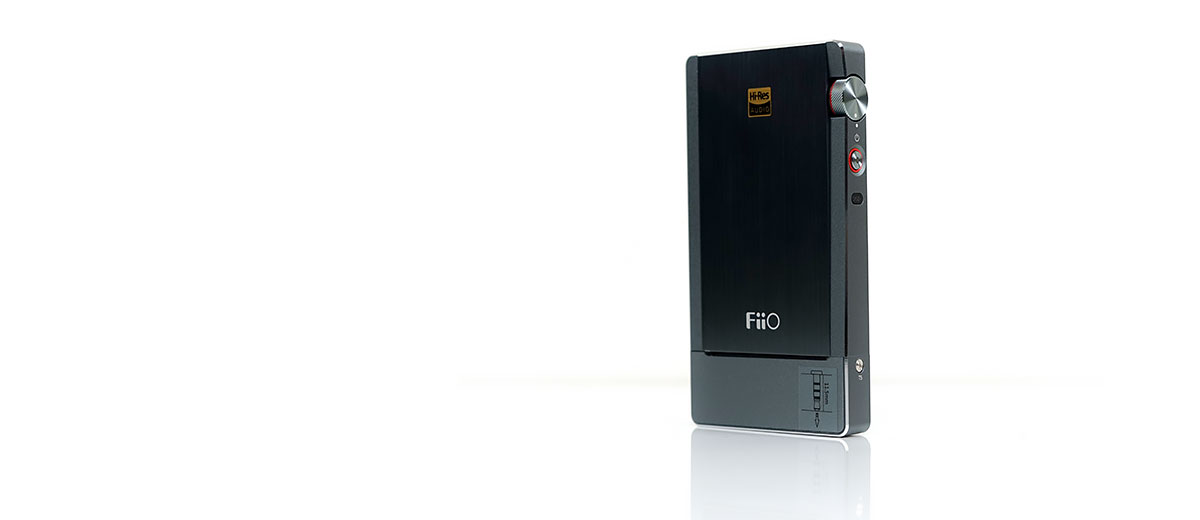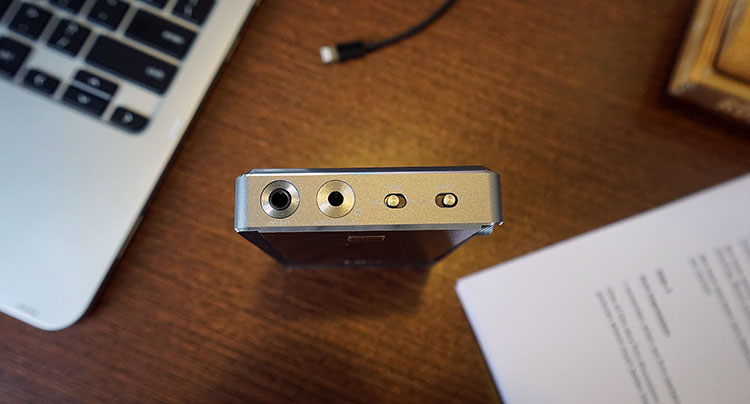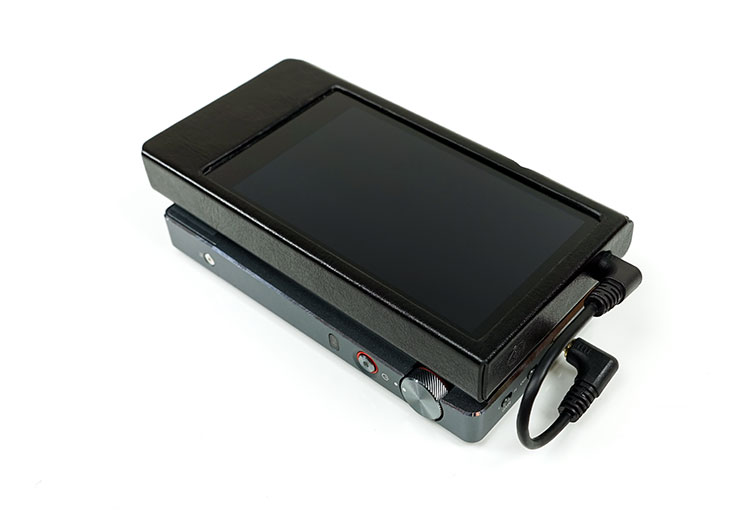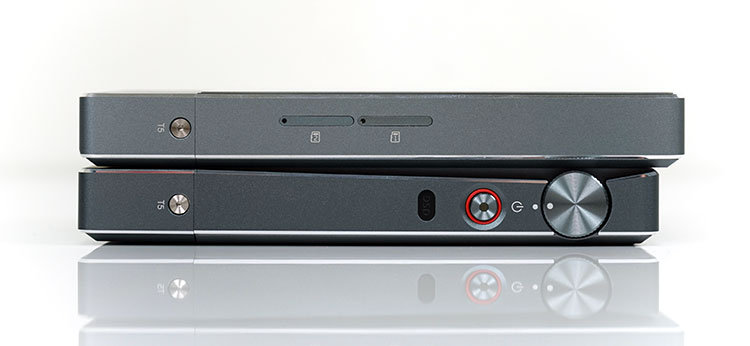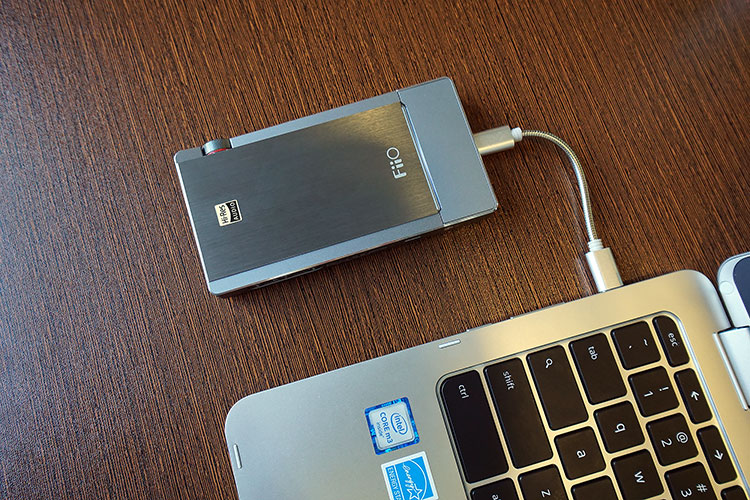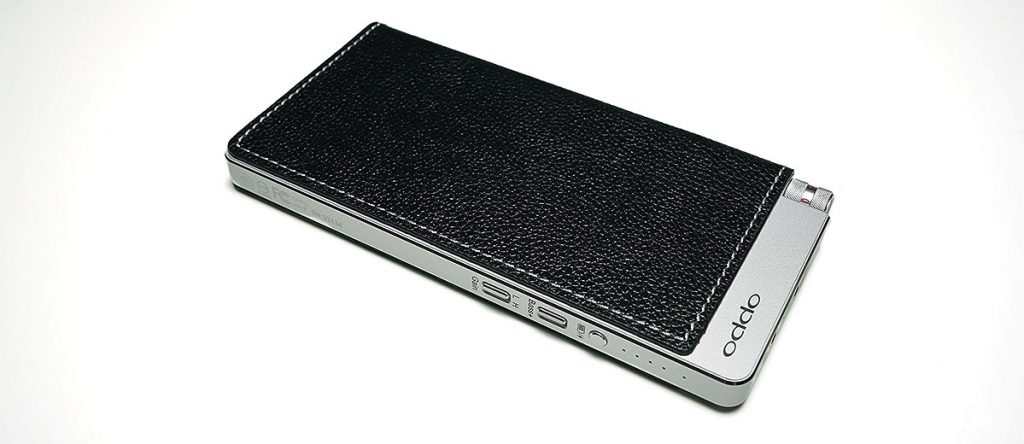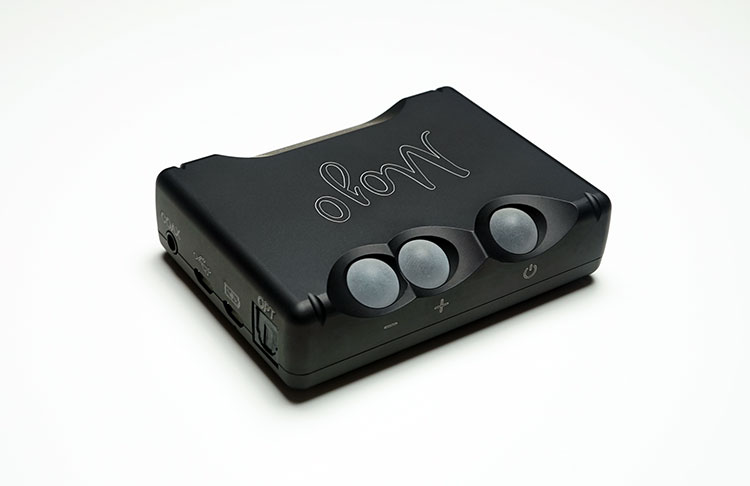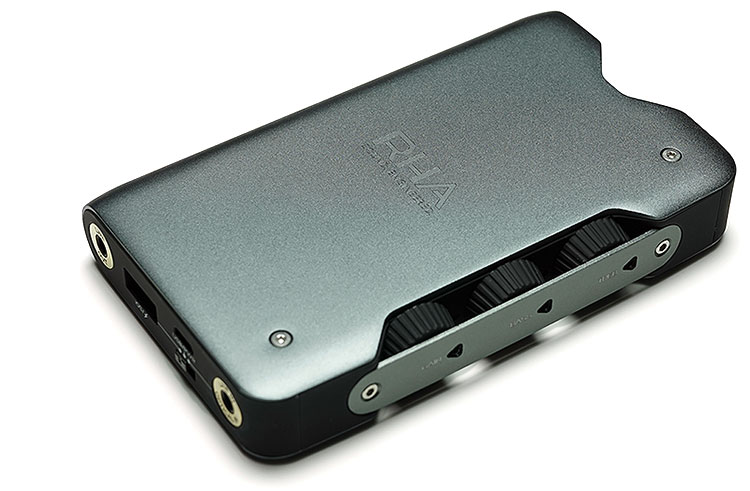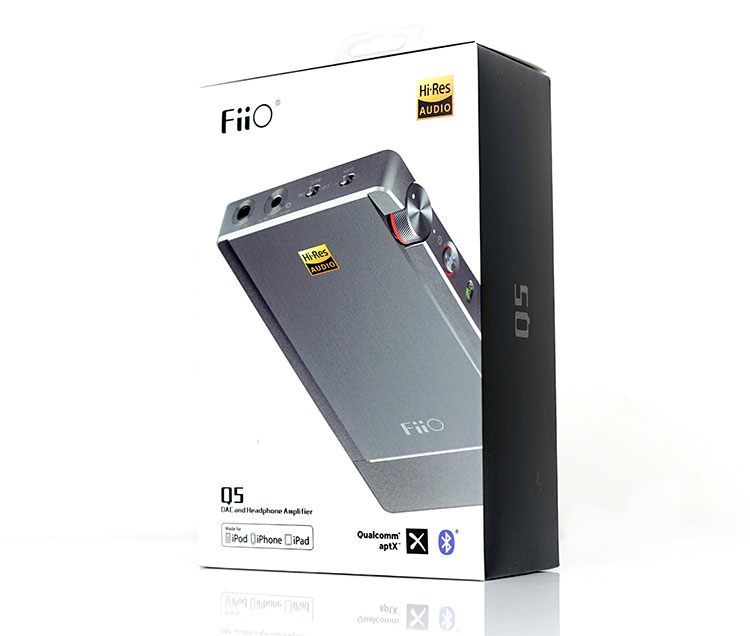Sound Impressions
Tonality & Presentation
X7ii Similarities
The audio performance of the Q5 is very similar to the X7 Mark II given its use of the same ‘out of the box’ AM3a amp module. This is a clean and clear presentation with a surprisingly neutral-to-natural presentation. The resolution is superb and definitely not short on micro-detail and not once did I ever perceive it to sound rolled-off on either end.
X7ii Differences
In fact, I would rate the Q5 a little more neutral than the X7ii. Especially so in the low-end, compared to how the AM3a sounds when paired with the X7ii. Some might prefer the X7ii/AM3a because of the slightly punchier low-end and a touch more warmth in the lower mids which is something I always found the X7ii to have within it compared to say the DX200 AMP 1 Card combination. The Q5 is certainly a lot more refined sounding than the older X7 with the amp cards so I have to take my hat off to FiiO for the Q5 tuning.
The other slight difference I can discern between the X7ii plugged into the AM3a and the Q5 is the treble performance. Both are excellent and quite detailed but the AK4990EN infused Q5 shows itself just a little more on the Q5 with a slightly harder edge to percussion and cymbal work than the ES9028PRO of the X7ii. With the X7ii combination, it is just a touch more natural-sounding but it is subtle and not that obvious.
X5iii Improvements
The dual AK4990EN design is also used in the X5iii but its performance is quite different when put side by side. The X5ii has a warmer low-end of the two, certainly a little richer but not quite as balanced sounding. The X5iii also sounds a bit more forward sounding, especially in the upper mids but it is a bit harder-edged and not as natural as the Q5 despite using the same DAC setup. Credit to the AM3a card and the new Q5 power filter design for bringing in what I think is a far better level of transparency and resolution.
I still enjoy the X5iii sound but for ultra-efficient IEMs and maybe tracks with a more complex layering of instrumental passages the Q5 offers a bit more clarity and certainly a lower noise floor for my money.
Bass Boost
The Q5 deploys a bass boost option that targets sub-100Hz by around 5-6dB in additional presence. The precise numbers given by FiiO when I met them are 5.5dB peaking at 60Hz with the curve starting at 20Hz and ending at 1Khz.
Impressively the noise floor on the Q5 remains unchanged when the boost is turned on. It is going to add a fair degree of low-end warmth and quantity to your presentation when turned on and will deliver a bit more sub-bass power which some may enjoy with harder-hitting EDM tracks where vocals are not a must. I would also consider it if I am using a particularly bass anemic headphone such as the T70p from Beyer which does respond quite well to EQ and bass tweaks.
The Bass boost does lift the rest of the response curve right in ever-decreasing amounts up to 1k so there is a touch more bloom and warmth creeping in which in turn competes a bit more with vocal presence and clarity. I tend to prefer the bass boost off with the Q5 as a vocal lover and retain that neutral and balanced presentation.
Matchability
Noise
With ultra-efficient IEMs such as the Andromeda, Shure’s SE840 and the VE6 going single-ended with the Q5 will deliver a low noise floor with little if any perceptible background hiss. On this setting, I give it the two thumbs up for just about any IEM.
Using balanced or 2.5mm though you will get a much higher noise floor and background hiss with the same efficient IEMs so I would not recommend this type of pairing with the Q5. Actually, using the same card with the X7ii will produce the same results in a balanced mode so it is more to do with the amp card then the device itself. There is no need to change to the AM1 card though, the AM3a single-ended will work just fine.
Moving up to less efficient IEMs, normally 30Ω upwards or lower sensitivity rated IEMs such as the Noble Audio Savanna or the 107dB rated Haka from Jomo Audio will also be just fine in balanced mode with low noise floors. FiiO’s own range of hybrid dynamic driver IEMs including the F9 and F9 Pro also produce low noise floors connected to the Q5 balanced output.
Power
The Q5 power numbers can change with the type of amp card you are using so it is not fixed in stone. The stock AM3a card is a sensible balance of efficiency and power for a fairly wide range of headphones and IEMs.
Vs AM1
On a 16 ohm/1kHz load the Q5/Am3a now outputs at 230mW which is slightly higher than the power rating of the AM1 card. It does, however, perform significantly better on higher loads than the AM1 with a 160mW at 32Ω rating compared to 100 mW at 32Ω and 17mW at 300Ω compared to the AM1’s weaker 10mW at 300Ω. What this means is the AM3a is a more flexible amp card for a wider range of IEMs and headphones than the AM1.
VS AM2/AM5
The Q5/AM3A will not give you the same levels of power as the 300mW and 500mW AM2 and AM5 in single-ended mode though if you are using the AM3a balanced output you can achieve up to 470mW of output power which will give the AM3a a clear edge over the AM2. It does rule out some IEM dues to increased noise floors.
I would still plump for the AM5 single-ended mode though for demanding headphones of 32 ohms and upwards. Both cards have a pleasing level of musicality and impact but on headphones such as the 36Ω AKG K872, the AM5 drives this closed headphone with a bit more low-end gusto than the AM3a single-ended output.
USB-DAC
Very easy to setup actually on most PC and alternative platforms. Brownie points for working with my Google Chrome laptop. Right out of the box it was a plug and play experience with a USB-C to micro-USB cable and was recognized immediately as a DAC device.
For Windows, FiiO is advising to download drivers but in Creator Edition it will setup automatically without the need to download drivers. Using WASAPI Creators Edition Windows 10 I had zero issues with 24BIT FLAC tracks out of FooBar and DSD256 out of JRiver (WASAPI also). Sure as anything the little DSD light lit up as soon as the DSD tracks were played. If you are not using the Creators Edition you will need to download the drivers from FiiO’s website.
Bluetooth
Backplate
If you run your hand down the back of the Q5 with a tiny bit of pressure you might detect a small ridge about 1/4 of the way down and the first quarter at a slightly lower level. This is where the BT antenna is housed.
There is no aluminum covering this part but it is disguised with the leatherback so it is not obvious that the backplate there is plastic rather than metal. It is still very durable but the plastic does not diminish the BT signal distance which the aluminum would do. I would also if you want the max range don’t hold it with your hand in that area also as it will disrupt the signal.
With it connected to the FiiO M7 and my LG G6 I was able to get the full 10 meters easily and about 7-8 meters with a single wall barrier. However, with my hand covering that plastic area it dropped by almost half of that with more significant dropouts.
Dual Connection Pairing
It will pair with just about any BT source, be it a smartphone, tablet or a DAP. For some reason, I did find my iTouch to take a small while to find the Q5 after disconnecting from my X7ii. I did deduce that like the X3iii the Q5 has BT dual connection capability so you can switch between two sources quite seamlessly like a DAP or a wireless device like the Cayin iDAp-6 streaming desktop unit.
Latency
Whilst I am fairly sure the apt-X of the FiiO Q5 does not have low latency or apt-X LL the delay between source action and the Q5 reaction was not too bad actually. Switching from device to device is a touch slower using the dual connection, however, play, press, and pause were fairly quick.
BT Performance
I love the fact FiiO decided to run the signal via the AK4990EN DAC than use the Qualcomm DAC because the sound quality is excellent. I can forgive them for dropping apt-X HD or LDAC a little with this full-sounding and thoroughly musical performance.
It does have a slightly different tone to it compared to the wired output via the AM3a but it is more nuanced than night and day. The BT output is more in tune with how I normally hear AK4990EN implementations with a slightly more aggressive and fuller sounding low-end and just a shade rolled-off on the very final octave in terms of energy and clarity.
Select Comparisons
Oppo HA-2SE
$299 (discontinued)
Form Factor
The HA-2SE sits squarely in the same market as the Q5 except for the lack of wireless implementation. It is still a 100% wired portable amp/DAC solution be it USB-DAC or OTG it will need stacked or sitting close by to the source.
It is much thinner than the Q5 and stacks just a little neater under smartphones though it lacks coaxial and optical connectivity with just 3.5mm LO and USB options for analog input, USB-DAC, and OTG.
Hardware
On the flip side, the use of a single ES9028Q2M in the HA-2SE will keep it very future-proofed with excellent dynamic range potential. The ES9028Q2M is a superior and more modern chipset on the AK4990EN, however, the amp output is fixed on the HA-2SE and still not 100% noise-free though very close.
The Q5 modular amp system keeps things varied and interesting and is quieter with certain amps.
The HA-2SE is fixed at 300mW into 16 ohms. Out of the box, the Q5’s unbalanced output is a little lower at 230mW, however, going balanced with the AM3a will deliver a far more impressive 470mW output. You can max it out at 800mW into 16 ohms with the AM5 card also if needed though the noise level will be higher.
Performance
The HA-2SE unbalanced has a slightly higher noise floor than the Q5 AM3a 3.5mm jack output, especially with sensitive IEMs. The HA-2SE noise floor to be fair is not that bad, much better than the older HA2 but side there is a noticeable difference on the Andromeda in favor of the Q5.
Tonally the HE-2SE is also fairly linear sounding also but just a shade brighter and drier across the board than the Q5 with the AM3a. However, the brightness does not equate to the meme “saber glare”. It is still quite a smooth and likable treble response.
Compared to the HA-2SE, you get a slightly more natural instrument timbre on the Q5 with a hint more lower midrange warmth and bass weight. However, the vocal presence on the Q5 lacks the same clarity and openness of the HA-2SE which is something I always liked about its DAC and amp implementation.
I would say though the Q5 vocal sounds a bit smoother just not quite as lively as the HA-2SE. With that mildly brighter sounding upper mid and lower treble you also get a little more edge and snap on percussion on the HA-2SE.
Chord Mojo
$599
The price is a little higher but the street price of a Mojo, particularly for a used unit has dropped and it does present a viable alternative to the Q5.
Technically it also lacks a wireless solution, something which is found in the Hugo rather than the Mojo so it is fundamentally a wired device with USB, optical and coaxial. The Q5’s use of BT apt-X does give it a modern mobility edge.
You can invest in the Poly which substantially upgrades the Mojo to a far higher level than the Q5 but you are talking almost a $1000 solution there and a different target market for me personally.
Form Factor
The Mojo form factor is also quite different with a boxed type design which is no match for the Q5 for stacking though it is built like a tank to be fair.
The Mojo has no swappable amp cards but its internal amp is pretty powerful. Out of the box, it will deliver 700mW into 8Ω which is a bit more power than the AM3a is capable of delivering. You have to go up to the AM5 amp card on the Q5 to outmuscle the Mojo though at the expense of additional noise, something the Mojo is very good at.
Technical
DAC implementation on both is quite different from Chord’s heavier use of FPGA and FiiO using Delta-Sigma chipsets but the output of both is more or less going to cover all the major codecs and sampling rates commercially available.
The Mojo will go higher to 768kHz PCM/DSD512 but for the vast majority of users, DSD256 and lower will be more than enough.
Performance
The noise floor on the Mojo is a touch higher than the Q5 with sensitive IEMs. Testing with the Granbeat OTG, which is a fairly noisy anyhow for some reason, the OTG connection for some weird reason both had background hiss but the hiss levels were just that bit higher on the Mojo.
Tonally the Mojo is a little more weighted on the low-end with better texture and more sub-bass presence. Yes, you can boost the Q5 and it will produce an equally heavy-hitting bass response but it does come with a cost with a slightly unbalanced feel to its mids.
The Mojo is also a little more natural sounding to my ears for vocal presence though not quite as forward in terms of positioning for treble performance. This is a tough cookie to beat sound quality wise even 2 years after its launch.
I would say detail-wise the Mojo does have the edge also but in some places, it is not as obvious as you would think particularly in the more relaxed treble signature.
Those who like a bit more snap and bite to their lower treble might prefer the tonal balance of the Q5 as it does push percussion a little further forward and sound the cleaner of the two. It is not as detailed but the perception as such you will find it a bit easier to pick out percussion attacks on the Q5.
RHA Dacamp L1
$549.95
Form Factor
The L1 was reviewed last year and we gave it a fairly good score. I would probably increase that score a little now that I have had considerably longer with it due to its energetic and tweakable solid-state signature and good power levels. The L1 form factor is a little wider and taller than the Q5 though almost the same in length so both are fairly stackable but both thicker than the Oppo HA-2SE by some margin.
Connectivity
Like the HA-2SE the L1 lacks wireless connectivity so both are a bit behind the Q5 in that regard. The L1 also lacks a coaxial input though does have a line input and output as well as optical and USB input. Both will do OTG though Q5 is not officially OTG. Both will work just fine with iDevices. Battery life is somewhat similar on both at 10 hours though more powerful amps cards such as the AM5 will shorten the Q5 battery life.
The L1 does offer a balanced option but it is that strange mini-XLR connector matched with the RHA CL1 balanced cable so it is not universally useful. The Q5 cards are 3.5mm, 25mm, and 4.4mm possible and have all the bases covered.
Technical
Both have a dual DAC implementation, however, the L1 uses a dual ES9018K2M compared to the Q5’s AK4990EN. Both have similar decoding capabilities and both are essentially portable chip solutions. I have a tendency to prefer the AK over the older Sabre chipsets.
I often find the older ones to be a bit cooler, more neutral in sound through the amp on the L1 is pretty energetic. Output power is 300mW into 16Ω which is a bit higher than the Q5 single-ended. You need to switch to balanced on the Q5 to get an edge in power.
One thing I quite like on the L1 which the Q5 does not have is the ability to independently tweak treble and bass presence (plus or negative) through hardware dials on the outside. The Q5 only has a bass boost option. I actually find the L1 treble to be very useful at times.
Performance
In terms of noise floors, the RHA single-ended is the more powerful of the two but will prove a much more difficult cookie to tame with sensitive IEMs. The volume is very aggressive and unbalanced for sensitive IEMs with a very sharp rise with minute levels of movement.
The Q5 is much smoother in gain and its ADC produces a superior channel balance. For IEMs the Q5 is the way to go unless you are packing RHA’s CL1/CL750 or some other high-resistance IEM.
Tonally the L1 is quite similar to the HA-2SE in terms of being a little brighter than the Q5 with more top-end sparkle and a slightly further forward sounding lower treble response. This is not a brittle or harsh treble response though not quite as refined sounding as the HA-2SE and a little more digital sounding than the Q5.
Where it diverges from the HA2-SE and the Q5 is the low-end which is energetic, punchy, and fun-sounding even without the individual bass and treble tweaking applied. It is not a warm or mushy sounding bass response, it is quite tight but just more aggressive sounding than the Q5’s more neutral and linear bass response.
Bass Boosting
The big edge for the L1 is the bass and treble tweaking. I think it has more flexibility than the Q5 single 5.5dB boost and you can implement it slowly or a lot in one go. I think its a bit more than 5dB at the top level but you can contrast it nicely with increasing the treble to produce an almost V-shaped type response which is totally inaccurate but lots of fun.
Our Verdict
This review went a bit longer than I intended. The Q5 has way too many features and I am sure I missed a few but I really wanted to keep this focused on IEM portability and wireless/wired integration features which is where I think the Q5 excels.
This is FiiO’s best Amp/DAC combo to date and I have tried just about every single one in the last 10 years. We have given fair scores to FiiO amps over the years but never super high scores because there are one or two niggles that always hold it back. Well, the niggles are much lower this time around. If I picked a few it is the cheap pouch coming in as stock and the lack of apt-X HD or LDAC which is actually in their consumer M7 DAP for a lower price.
The routing of the BT signal via the AK4490EN rather than the Qualcomm SOC does breathe some good life and quality into the Q5 BT performance but the longevity of that codec is under threat right now from the likes of their own M7 and Android Oreo baked in LDAC capabilities.
Flipside
On the flip side, this is a very mature-sounding implementation of the AK4990EN, perhaps one of the best at this price point helped by the excellent AM3a amp card. Its low noise unbalanced for sensitive IEMs, good enough power for most portable cans, and paints a very natural to slight neutral sound that pairs well with a broad range of genres.
The value right now of the Q5 is very strong. I think especially for those who want the amp card system but do not want to go flagship prices with the X7 Mark II. I do rate it better than the X5iii on pure sound quality alone so it’s a very attractive wired and wireless solution for those who want to hang onto their existing sources.
FiiO Q5 Technical Specifications
- Output Impedance<1.4Ω (32Ω loaded)
- Channel Separation≥73 dB (1 kHz,AUX IN)
- Output Impedance<2Ω (32Ω loaded)
- Channel Separation≥99 dB (1 kHz,AUX IN)

